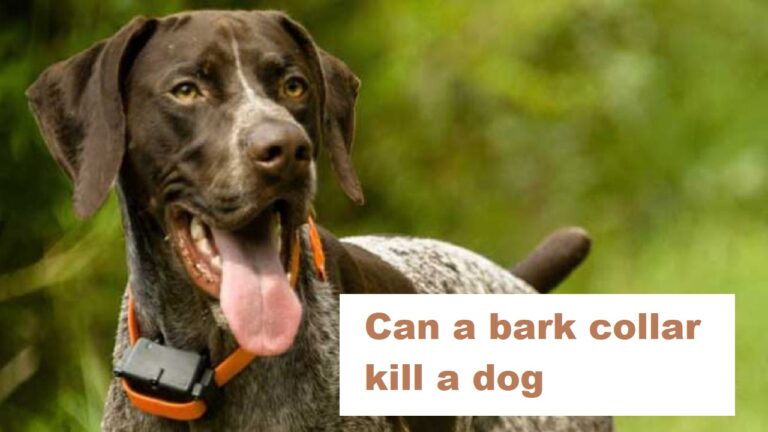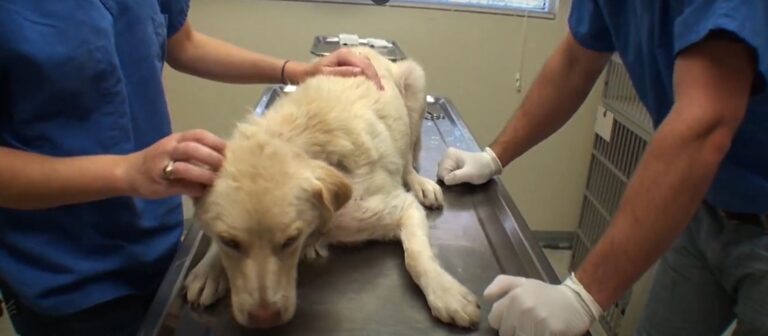Mother Dog Won’t Stay In The Whelping Box. (7 Reasons & When To Worry)

Did you just notice your new mother dog snuggling outside her whelping box or pacing restlessly around the room, away from her adorable litter of puppies? As a pet parent, this behavior might leave you puzzled. Why would she distance herself from the little ones that she should instinctively care for?
The truth is that mother dogs, like humans, sometimes need short breaks from their maternal duties. They may step out of the whelping box to eat, drink, relieve themselves, or simply enjoy a moment of solitude.
Although it’s normal for the mother dog to leave the whelping box periodically, prolonged or frequent absences could be concerning as she will not be available to nurture her puppies. In this case, you should inspect your dog for any signs of health issues.
It’s important to equip yourself with the necessary information to understand this happens and intervene at crucial moments in the life of your mother dog and her newborn puppies.
Is it normal for my dog to leave the whelping box?
In essence, yes, it is normal for a mother dog to leave her whelping box, and there are several reasons why this might happen. Mother dogs are not entirely different from humans when it comes to child-rearing; they need breaks too. The constant demands of caring for her puppies can be physically and mentally taxing.
This need for alone time is often more apparent in the first few weeks after the puppies are born. During this period, puppies need round-the-clock care, which can be exhausting for the mother. Leaving the box for brief periods allows her to relax, gather her strength, and then return to her puppies with renewed energy.
Additionally, mother dogs often leave the box to lead their pups in exploring their surroundings as they get older. As the puppies’ primary role model, she plays a crucial part in teaching them about the world outside their box, facilitating their physical development, and encouraging their natural curiosity.
However, while it is typical for mother dogs to leave the whelping box intermittently, extended periods of absence are not normal and can be harmful to the puppies, especially in their first few weeks of life. Puppies cannot regulate their body temperature effectively in the early days and rely on their mother for warmth. Prolonged absences can lead to them becoming chilled, a serious concern that should be addressed immediately.
Mother Dog Aggressive Towards Father And Won’t Let Him Near Puppies
Why Your Mother Dog Won’t Stay in the whelping box
When a mother dog consistently leaves her whelping box, it might signify the following:
1. Comfort and Temperature of the Whelping Box
The whelping box serves as a safe and secure space for the mother dog and her pups during the first few weeks after birth. Just as humans value comfort in their environment, the same applies to dogs. If the box is too hot, too cold, cramped, or the bedding uncomfortable or scratchy, the mother might find it difficult to relax and care for her pups. These factors can cause her to frequently leave the whelping box.
To address this, ensure that the box is spacious enough for the mother to move around comfortably, but not so large that the pups can wander away and get cold. The bedding should be soft, warm, and easy to clean. Maintain an ambient temperature as newborn pups cannot regulate their body temperature.
2. She’s Not Used To A Whelping Box
An environment that is new and unfamiliar can be unsettling to a dog, especially during the stressful period of motherhood. If the mother dog has not been properly introduced to the whelping box before the arrival of her puppies, she might be uncomfortable and reluctant to stay inside it.
To prevent this, introduce your dog to the whelping box well before she’s due. Let her explore and get used to it at her own pace. Placing a few of her favorite toys or a piece of your clothing can help make the box feel more familiar and comforting.
3. The Need for a Break From Nurturing
Motherhood is demanding, and dogs, like humans, sometimes need a breather. Caring for a litter of puppies, which involves nursing, cleaning, and keeping them warm, can be exhausting and stressful. This could prompt the mother to step out of the whelping box for short periods.
Unless these breaks become excessively long or frequent, there is no cause for alarm. A stressed mother may not be as effective in caring for her pups, so these short periods of rest away from the pups can be beneficial.
4. Dealing with Sick or Deformed Puppies
Mother dogs have an inherent ability to sense when a puppy is unwell or has congenital anomalies. In the wild, this behavior is an evolutionary adaptation to protect the overall health of the litter. The mother might distance herself from an unhealthy pup, which could result in her spending less time in the whelping box.
In such cases, it is crucial to consult a veterinarian who can examine the puppies, provide appropriate treatment, or recommend supplemental care, if necessary.
5. Lack of Maternal Instincts
Not all mother dogs have strong maternal instincts. This is especially common in young/first-time mothers or specific breeds. If the mother appears disinterested in her puppies or neglects to care for them, you may need to step in to provide additional support. This could involve feeding the puppies with a milk replacer, helping stimulate elimination, and ensuring the puppies are warm.
6. Health of the Mother Dog
Just like humans, a dog’s physical well-being plays a significant role in her ability to care for her young. If the mother dog is ill, she might spend less time in the whelping box. Signs of illness can include loss of appetite, vomiting, diarrhea, lethargy, or behavioral changes. If you suspect that the mother dog is ill, it’s critical to seek veterinary attention promptly. Her health not only affects her ability to care for her puppies but also her overall well-being.
7. She Does Not Recognize Her Puppies (Especially after a Cesarean Section)
In some instances, particularly following a Cesarean section, a mother dog may not recognize her puppies. The lack of a natural birthing process can sometimes disrupt the mother’s initial bonding with her puppies, causing her to behave indifferently or even avoid them. The hormonal imbalance, stress, and disorientation following a major surgery like a Cesarean section can also contribute to this behavior.
If your dog has undergone a C-section and is exhibiting these behaviors, it’s important to consult with your veterinarian.
How Long Can A Mother Dog Stay Away From Her Puppies?
In the initial stages, a mother dog’s presence with her pups is almost constant. Newborn puppies, being utterly dependent on their mother, require constant care, feeding, warmth, and help with excretion. Therefore, during the first week, a mother dog will usually only leave her puppies for a few minutes at a time, to eat, drink or go to the toilet herself.
As the puppies grow and develop, however, the mother dog will gradually start spending more time away from them. By the time they are 2-3 weeks old, puppies begin to move around more and start to explore their surroundings, and they will also start to eat some solid food. At this stage, the mother dog may stay away for longer periods, up to several hours at a time.
This separation is also part of the puppies’ learning and development process. They begin to learn independence and social behaviors from their siblings, and less direct supervision from the mother dog is required.
However, even at this stage, a mother dog will still be very attentive to her puppies’ needs. If they become distressed or need feeding, she will generally return to them promptly. Any extended absence during this period that leads to distress among the puppies should be taken seriously.
It’s also important to note that every dog is an individual, and what is considered normal can vary slightly between different dogs. Some mother dogs are naturally more attentive or anxious, while others are more relaxed.
When To Worry Your Mother Dog Not Staying In Whelping Box
As a pet owner, it’s crucial to be vigilant about any unusual behavior from your pets. In the case of a mother dog and her newborn puppies, it’s important to understand when her absence from the whelping box may be a cause for concern.
1. Mother Dog Is Not Feeding Her Puppies
In the first few weeks following birth, puppies rely entirely on their mother’s milk for their nutrition. A mother dog typically nurses her puppies several times a day. If you notice that she is consistently avoiding the whelping box and not feeding her puppies, it is cause for concern.
Puppies who don’t receive adequate nourishment will become weak, cry excessively, and fail to gain weight. They might also crowd together for warmth due to low energy levels. In such cases, you should consult with your vet immediately, as the puppies might need supplemental feeding or medical attention.
2. She’s Staying Out Of the Whelping Box For Too Long
While it’s perfectly normal for the mother dog to take brief breaks from her puppies, extended periods of absence during the early weeks are not typical. Puppies are unable to regulate their body temperature effectively and rely on their mother’s body heat and the company of their siblings to stay warm.
If the mother dog is absent for extended periods, puppies might become chilled, which can be life-threatening. Additionally, prolonged absence could mean that the puppies are not being fed regularly, which could lead to malnutrition. If you notice this behavior, it would be prudent to seek advice from a veterinarian.
3. Momma Dog or Her Puppies Are Sick
If the mother dog is unwell, she might spend less time in the whelping box. Symptoms of illness in dogs can include lethargy, loss of appetite, vomiting, diarrhea, or unusual behavior. It’s critical to seek veterinary attention if you suspect the mother dog is ill, as her health can affect her ability to care for her puppies.
Similarly, if any of the puppies are unwell, the mother dog might distance herself from them. If you observe that the mother dog is avoiding one or more of her puppies, inspect them for signs of illness. Sick puppies might be weaker, less active, refuse to feed, or be less responsive than their siblings. Again, immediate veterinary attention is necessary in such cases.
What To Do If Your Mother dog won’t stay in the whelping Box
Having a mother dog that’s reluctant to stay in her whelping box can be a challenging scenario. However, there are steps you can take to address the issue and create a more comfortable environment for both mother and puppies.
1. Make Suitable Adjustments To The Whelping Box
Your dog’s discomfort with her whelping box could be due to many factors. Evaluate the box for size, comfort, and temperature. It should be spacious enough for the mother to move freely, but cozy enough for the puppies to stay close together for warmth. The bedding should be soft and comfortable, perhaps try different materials to see which one she prefers.
Maintaining a warm, but not overly hot temperature in the box is crucial, as newborn puppies can’t regulate their body temperature. If it’s too hot, try moving the box to a cooler location or adjust any additional heating elements you might be using. Similarly, if it’s too cold, consider adding heat lamps or warm blankets.
2. Ensure She’s Well Fed And Taken Care Of
Nurturing her puppies is a physically demanding task for a mother dog, requiring plenty of energy. Make sure she has a nutritious diet and constant access to fresh water. If she’s well-fed and hydrated, she’ll be more equipped to look after her puppies. Keep her living area clean and comfortable to minimize stress and distraction, which can often cause a dog to leave her whelping box.
3. Treat The Sick Dam or Pup
If either the mother or any of the puppies are unwell, this could be the reason she’s avoiding the whelping box. Monitor closely for any signs of illness and consult with your veterinarian if you suspect anything. They can provide treatment options and guidance on how to care for a sick dog or puppy. Never ignore signs of illness as these can quickly escalate, especially in newborn puppies.
4. Constant Monitoring
Regularly observe the mother dog and her puppies. Watch for changes in behavior, eating habits, and interactions. Use a baby monitor or pet cam if you can’t be there physically all the time. Early detection of potential issues allows for timely intervention and reduces the chance of more serious complications.
5. Get Her Accustomed To The Whelping Box Before Labor
Familiarity plays a significant role in how comfortable a dog feels in her whelping box. Ideally, introduce the box to your dog around two weeks before she’s due to give birth. Allow her to spend time in it, sleep, and play. This way, when the time comes to deliver, the box will be a safe and familiar place for her.
Final Thoughts
Caring for a mother dog and her puppies is a beautiful, rewarding experience, but it also comes with responsibilities and concerns.
While it is normal for a mother dog to occasionally leave her whelping box, it’s essential to understand why this might be happening and know when it’s cause for concern. Is she merely taking a much-needed break or is there an underlying issue, such as illness or discomfort? Regularly monitor her behavior and the condition of the puppies, and always consult with a vet if you notice any signs of distress or abnormal behavior.
Remember, the whelping box is the first home your puppies know; it’s their safe space. Making it comfortable for the mother dog is a crucial step in ensuring that she stays there as much as necessary. Introducing the whelping box before labor can make a big difference, as can ensuring that she’s well-fed and taken care of.
Finally, enjoy this precious time with your pet and her new puppies. It can be a whirlwind of feeding, cleaning, and monitoring, but it’s also a unique period filled with beautiful moments. Seeing your pet care for her little ones and watching them grow and learn is truly a joy. Stay informed, stay vigilant, and don’t hesitate to seek professional help when needed.
Read related posts about





